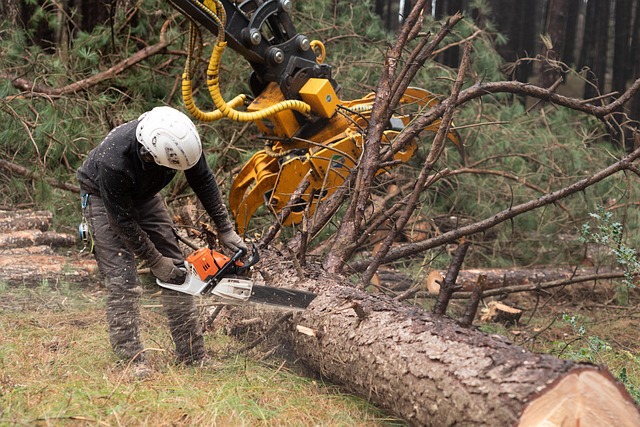In Denver, winter tree pruning offers optimal conditions for maintaining urban forest health by addressing common pests like aphids, spider mites, and scale insects. This practice enhances air circulation and light penetration, deterring pests while promoting strong, resilient trees. Regular pruning, combined with proper care, strengthens defense mechanisms against infestations and diseases, ensuring trees remain vibrant and thriving throughout the year.
In the vibrant landscape of Denver, proper tree care is essential for maintaining healthy ecosystems. This article explores the multifaceted approach to pest infestation control, focusing on understanding common pests and the benefits of winter tree pruning. We delve into effective strategies such as identifying and addressing infestations early, the significance of seasonal pruning in enhancing tree resilience, and proactive measures to foster a thriving tree environment. By embracing these practices, Denver residents can ensure their trees flourish year-round.
- Understanding Pest Infestations: Common Pests in Denver's Trees
- Winter Pruning: The Key to Effective Pest Control and Tree Health
- Proactive Measures: Preventive Care for a Healthy Tree Ecosystem
Understanding Pest Infestations: Common Pests in Denver's Trees

Understanding Pest Infestations: Common Pests in Denver’s Trees
In the vibrant landscape of Denver, tree care goes beyond aesthetics; it involves addressing pest infestations that can threaten the health and longevity of our urban forest. Winter is an optimal time for tree pruning, offering numerous benefits such as improved plant vigor and reduced pest pressure. The cold season slows down insect activity, making it easier to identify and address issues before they escalate. Common pests in Denver’s trees include aphids, spider mites, and scale insects, which can cause significant damage if left untreated.
These pests often hide in the nooks and crannies of tree branches, feeding on plant sap and leaving behind resin or webbing. Early signs of infestation may include leaf distortion, yellowing, or premature shedding. Regular monitoring and winter pruning can help mitigate these issues. By removing dead or diseased branches and thinning the canopy, trees become less hospitable to pests, fostering a healthier environment for their overall growth and development.
Winter Pruning: The Key to Effective Pest Control and Tree Health

In the context of tree care, especially in Denver’s unique climate, winter pruning stands out as a strategic approach to pest infestation control and promoting overall tree health. The benefits are multifaceted; for one, it allows arborists to identify and address weak or damaged branches that could be susceptible to pests and diseases during the colder months. By removing these vulnerable parts, trees are better equipped to withstand potential infestations.
Moreover, winter pruning facilitates the natural defense mechanisms of trees. Many pests become inactive during winter, making this the ideal time for cutting back overgrown branches. This practice not only enhances air circulation and light penetration, which deter a range of pests, but it also encourages new growth in spring, fostering a healthier tree ecosystem. The benefits of winter tree pruning in Denver are evident in its capacity to strengthen trees, making them less vulnerable to pest infestations and ensuring their longevity.
Proactive Measures: Preventive Care for a Healthy Tree Ecosystem

Proactive measures, such as regular winter tree pruning in Denver, are essential for maintaining a healthy tree ecosystem. This practice not only removes dead or diseased branches but also improves overall tree structure and promotes better growth in the spring. By addressing potential issues early on, homeowners and arborists can prevent pest infestations and diseases from taking hold.
In addition to pruning, proper watering, fertilization, and regular monitoring for signs of stress or unusual activity are key components of proactive tree care. These measures create a robust defense mechanism against pests by keeping trees strong and healthy. This, in turn, reduces the likelihood of severe damage or loss caused by infestations, ensuring your trees remain vibrant and resilient year-round.
In conclusion, integrating a comprehensive tree care strategy that includes understanding pest infestations, practicing beneficial winter pruning, and adopting proactive measures is key to maintaining healthy trees in Denver. By recognizing common pests, timing your pruning during the winter months for optimal benefits, and providing ongoing preventive care, you can enhance tree health, prevent severe damage, and foster a vibrant urban landscape. The benefits of winter tree pruning in Denver are multifaceted, contributing not only to the aesthetic appeal of our city but also to the overall ecological balance and resilience of our urban forest.
